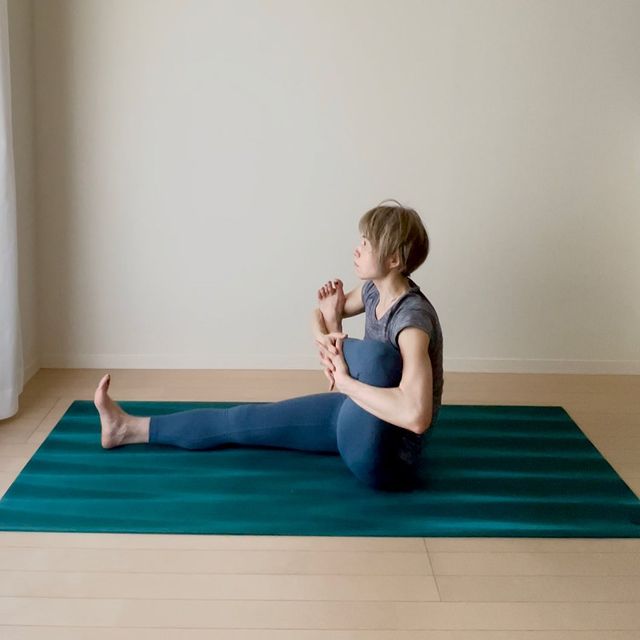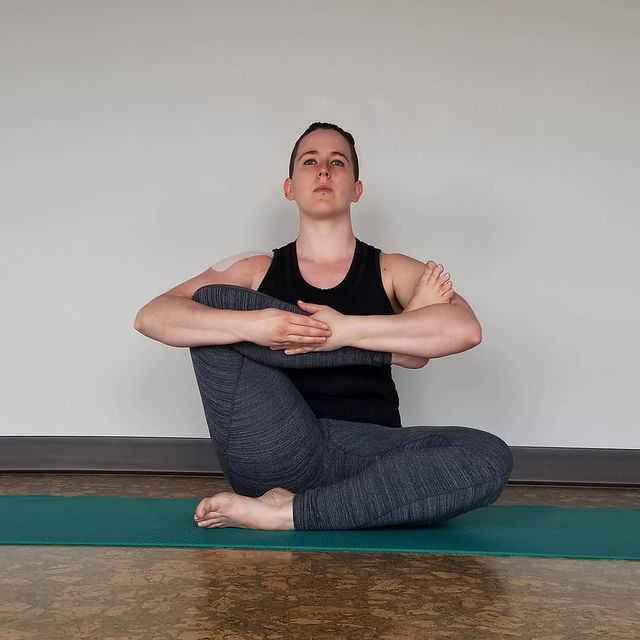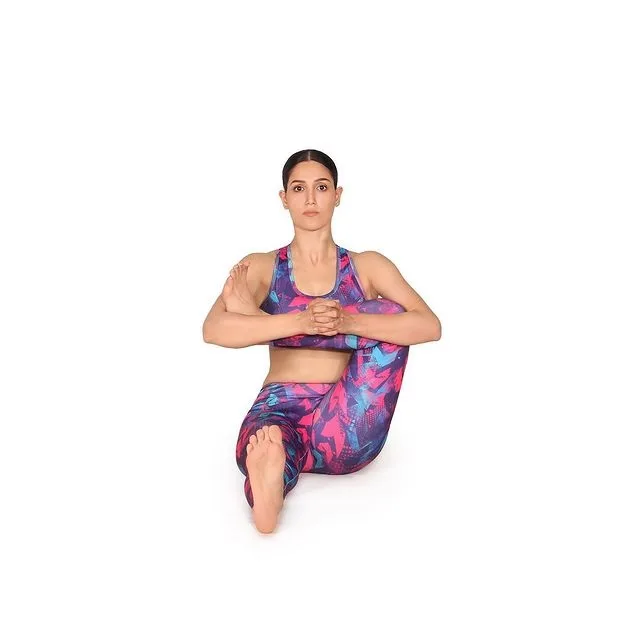Baby Cradle Pose, also known as Rock the Baby Pose, and called Hindolasana in Sanskrit, opens up the groin muscles and improves flexibility in the hips.
This is a beginner-level hip-opening pose that also serves as a starting pose for more advanced seated hip-opener poses, such as the Padmasana (Lotus Pose) and Kapotasana (Pigeon Pose) series of asanas.
Hindolasana also strengthens your arms, shoulders and abdominals while stretching your hamstrings and calf muscles. The pose can be done whenever you feel any tightness or discomfort in your hips, pelvis, or upper thighs.
Information
| Known as: | Baby Cradle Pose, Hindolasana, Cradle Pose, Leg Cradle Pose, One Leg Cradle Pose, Rock the Baby Pose, Seated Cradle Pose, Knee Rocking Pose |
| Sanskrit name: | हिंडोलासन |
| IAST: | Hindolāsana |
| Pronunciation: | hin-do-LAHS-uh-nuh |
| Level: | Beginner |
| Type: | Sitting, Hip opener |
| Total time: | 30 to 60 seconds |
| Drishti: | Forward |
| Chakra: | Swadisthana Chakra, Muladhara Chakra |
| Focus: | Legs |
| Indications: | Digestion, stimulates colon, liver, kidneys, reproductive and digestive systems |
| Counterpose: | Dandasana (Staff Pose) |
| Preparatory poses: | Sukhasana (Easy Pose) |
| Follow-up poses: | Butterfly Pose (Baddha Konasana), Chakki Chalasana, Lotus Pose |
| Contraindications: | Knee injury or hip injury |
Meaning
The Hindolasana is derived from the Sanskrit name, which is made up of two words — Hindola + asana:
- “Hindola” = “swinging cradle or hammock”
- “asana” = “pose or posture”
In Hindolasana, practitioners sit in a cross-legged position on the floor, then lift the upper leg and cradles it in their arms from knee to toe. To complete the pose, the yogi moves the leg back and forth as if moving a child. For full expression of the pose, the other leg can be straightened, as in the Dandasana.
Benefits of Baby Cradle Pose
Apart from being a hip opener, the pose has physical and mental benefits, which are listed below:
- Physical Benefits:
- Opens the pelvic region
- Stretches the thighs, hamstrings, and calf muscles
- Creates proper engagement of the hamstrings
- Massages the abdominal muscles
- Improves digestion
- Stimulates the reproductive and digestive systems
- Stimulates the colon, liver, and kidneys
- Mental Benefits:
- Calms the mind
- Soothes the nervous system
- Develops mental focus
Step-by-step Baby Cradle Pose (Hindolasana) Practice Guide

Step-1
Sit with your legs extended (Dandasana or Staff Pose). Press your hands to the floor to lengthen your spine.
Step-2
Bend your left leg and draw your knee to the side. Bring your hands under your foot, cradle your foot and lower shin. Turn your right leg in and extend out through your leg from the core of your pelvis.
Step-3
Lift the left leg up and bring it parallel to the floor. Extend the toes of your left foot. Keep your ankle square by spreading it evenly through both sides of your ankle. Draw your low back in and up. Press the thigh bone of your right foot into the floor,
Step-4
Hold your left foot in the elbow of your right hand. Wrap your left hand around the outside of your left knee and around your lower leg. Grab your right wrist with the left hand. Inhale, and move the left knee slightly away from your body. Exhale, and draw your shin and leg in toward your torso. Press the big toe of your left foot into your right forearm just above the elbow. Draw your lower back in and lift from the core of your pelvis through the crown of your head.
Step-5
Stay in this position for 30 to 60 seconds, then release and repeat the process on the other side.
Beginners’ tip

If you are new to yoga, bend the knee of your lower leg and draw your leg closer to your body.
Modifications and Variations
After practicing the Hindolasana, extend the right leg and hold it in the air, toes pointing towards the ceiling, rest your foot on the knee, calf, ankle or foot with your right hand. Sit up straight with the spine straight. Hold it for 30 seconds. After sitting cradle pose on the left side, repeat on the left side.
Base pose as Sukhasana (Easy pose)
Sitting in an easy posture, twist your head, neck and shoulders from the waist to the right and left, alternately looking behind you and increasing the speed as you repeat the twist. The right and left hands, alternately, behind you should touch the floor on both sides.
Inclined cradle pose
- For the inclined cradle pose, start by lying on your back.
- Bend your knees, keeping both feet flat on the ground beneath them.
- Cross the right ankle over the left knee.
- Opening your hips, begin to press your right knee away from your upper body.
- Raise your legs towards your chest.
- Place your fingers on the back of your left thigh, extending your right hand between your legs and your left hand on the outside of your left thigh.
- Breathe in and out, drawing the legs in toward the chest, while energetically pressing the right knee away from the body.
- Practice on each side for about 30 to 60 seconds.
Precautions and contraindications
Hindolasana is a beginner level pose in a sitting position, however there are still some precautions and contraindications that need to be kept in mind while practicing this asana, which are explained below:
Injury
Practitioners should be careful in this yoga pose if there is any kind of injury to the hips, knees, lower back and spine.
Arthritis
Individuals with arthritis of the hips, knees, and spine should perform this yoga asana while sitting on a pillow or a chair and with the full guidance of a yoga teacher/instructor.















